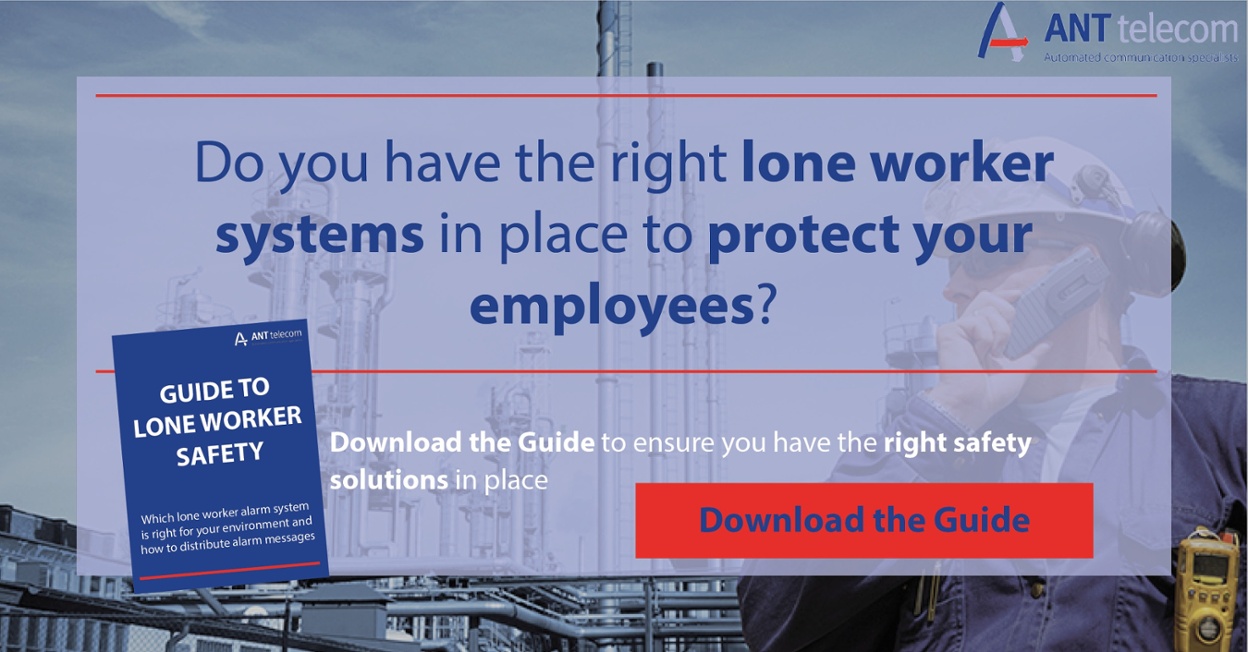
Lone worker hazards can be found in many working environments, but COMAH sites are among the most dangerous. Protecting all workers from hazards in such an environment is a major factor in correct health and safety management. Conforming to ATEX regulations in areas that contain hazardous waste is crucial but managing the health and safety of individuals in this environment can be challenging. Although many workers may work alongside others, there can be incidences where a worker may be required to work alone. In these situations, it is important that managers employ the correct strategies to prevent accidents from occurring. Managing health and safety in ATEX environments requires further planning and poses additional areas for consideration.
Hazards for Workers on COMAH Sites
Although each COMAH site differs depending on the nature of the business, they all have one thing in common, the need for the disposal of hazardous waste. Workers that are responsible for this (or are part of the process) are at a greater risk of injury than those working on other areas of the site. A manufacturing plant will usually have lone worker hazards to be aware of. These include dangerous machinery that can cause injury from moving parts, or stock areas where workers may be injured by falling stock. COMAH sites pose additional risks, with workers exposed to explosive materials. For those working alone in these areas, the chance of injury can be even greater.
Pharmaceutical companies that are responsible for the production of prescription drugs commonly have areas that produce hazardous dust. The risk of explosion or injury caused by inhalation is greater in these areas, and workers are required to follow strict ATEX protocol. In addition to this, areas producing chemical or alcohol-based products will contain hazardous gases that are highly flammable and have explosive properties. Any worker that is responsible for carrying out tasks in these environments faces further challenges, and safety management requires specialist planning to prevent incidents for occurring. A small spark in an environment with explosive gases or dust can cause a large explosion, therefore specialist equipment is required to prevent this from happening.
Lone Worker Hazards and Challenges In A COMAH Environment
Lone workers may only make up a small part of a workforce, but any individual working alone for any period of time needs to be given additional consideration when it comes to health and safety management. The biggest area for concern with a lone worker is communication, because if a lone worker is injured it can be difficult for them to communicate this to others. In addition to this, communication is necessary to prevent others from being exposed to the same danger. For example, if a lone worker encounters an explosion and sustains an injury from this. It is important that they not only receive the help they need, but warn others of danger so that a suitable response can be formed to prevent further injury to other staff members.
The biggest challenge that lone workers face in an ATEX area is that communication devices such as standard radios and mobile phones are off limits. This is due to the potential of explosion caused by a spark from an electrical device. It is important for all workers on a COMAH site to have access to a means of communication, particularly those that may be working alone for a period of time.
Planning for COMAH Site Incidents
Each COMAH site will have its own set of challenges for health and safety managers to incorporate into a health and safety plan. Being aware of these challenges requires thorough assessment and planning, therefore a risk assessment is usually the first place to start. Undertaking a risk assessment and identifying areas for concern, (including those that require the company to follow ATEX regulations) is necessary. Once a risk assessment has been conducted, a plan can be formulated to ensure that both production staff and managers feel safe in the workplace. Recording the results of the risk assessment is important as they will need to be used to evidence the use of the correct procedures when adhering to ATEX requirements.
As many companies are often changing, with new equipment being added regularly, risk assessments need to be performed on a regular basis. It is also important that all staff are aware of the risks associated with their role and correctly trained on the procedures that they need to follow to be best protected from injury in the workplace. This means it is a good idea to keep a training record that evidences the capability of each staff member, to prevent any injuries caused by a lack of knowledge.
Communication In An ATEX Area
Communication needs to be a large consideration for any risk assessment. Although COMAH sites have restricted ATEX areas where the use of standard mobile communication devices are prohibited, having no access to a means of communication is very irresponsible. There are ways to ensure that workers can communicate in the event of an accident that also conform to ATEX regulations. Therefore, finding a provider that can cater to this is paramount.
ATEX Regulated Communication Devices
ANT can provide devices that conform to ATEX regulations and are safe to use in ATEX areas.
Devices can be used by the mobile workforce for general communication and keeping in touch with each other anywhere on the plant including restricted ATEX areas. Furthermore, those that work alone can utilise ATEX devices that have panic buttons and tilt sensors that can raise an alert should they have an accident. The tilt sensor is useful as it can trigger an alarm automatically if the worker has fallen unconscious and is unable to press a panic button.
To ensure each lone worker alarm is properly managed and dealt with quickly, the solution also incorporates alarm management software that distributes alarms to a team of responders that can act and assist the worker immediately. Each alarm must be acknowledged within a certain timeframe by a member of the response team to prevent further escalation.





